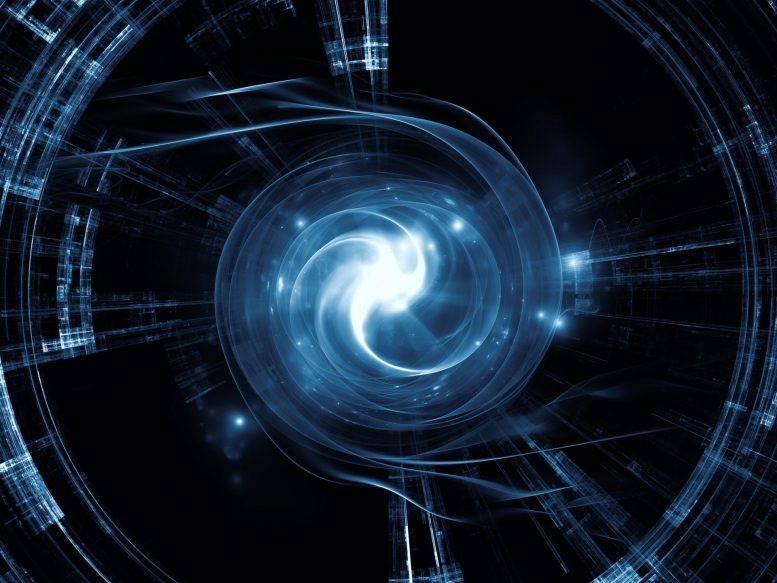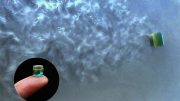
Ultracold atoms manipulated by lasers realized a Laughlin state, a peculiar quantum liquid where each atom dances around its congeners. Credit: Nathan Goldman
The discovery of quantum Hall effects during the 1980s unveiled new forms of matter termed “Laughlin states,” named after the American Nobel laureate who successfully characterized them theoretically.
These exotic states uniquely appear in two-dimensional materials, under extremely cold conditions, and when subjected to a profoundly strong magnetic field. In a Laughlin state, electrons constitute an unusual liquid, where each electron dances around its congeners while avoiding them as much as possible.
Exciting such a quantum liquid generates collective states that physicists associate with fictitious particles, whose properties drastically differ from electrons: these “anyons” carry a fractional charge (a fraction of the elementary charge) and they surprisingly defy the standard classification of particles in terms of bosons or fermions.
For many years, physicists have explored the possibility of realizing Laughlin states in other types of systems than those offered by solid-state materials, in view of further analyzing their peculiar properties. However, the required ingredients (the 2D nature of the system, the intense magnetic field, the strong correlations among the particles) proved extremely challenging.
Writing in Nature, an international team gathered around the experimental group of Markus Greiner in Harvard report on the first realization of a Laughlin state using ultracold neutral atoms manipulated by lasers.
The experiment consists in trapping a few atoms in an optical box, and in implementing the ingredients required for the creation of this exotic state: a strong synthetic magnetic field and strong repulsive interactions among the atoms.
In their Article, the authors reveal characteristic properties of the Laughlin state by imaging the atoms one by one through a powerful quantum-gas microscope. They demonstrate the peculiar “dance” of the particles, which orbit around each other, as well as the fractional nature of the realized atomic Laughlin state.
This milestone opens the door to a wide new field of exploration of Laughlin states and their cousins (e.g. the so-called Moore-Read state) in quantum simulators. The possibility of creating, imaging, and manipulating anyons under a quantum-gas microscope is particularly appealing, in view of exploiting their unique properties in the lab.
Reference: “Realization of a fractional quantum Hall state with ultracold atoms” by Julian Léonard, Sooshin Kim, Joyce Kwan, Perrin Segura, Fabian Grusdt, Cécile Repellin, Nathan Goldman, and Markus Greiner, 21 June 2023, Nature.
DOI: 10.1038/s41586-023-06122-4









Do more research on life after death.
According to the topological vortex gravitational field theory, material world is a whole of interactions and connections, no particle or physical structure can exist independently of the world. Any physical phenomenon observed in scientific research will not be its entirety. Physics must face up to the problem of gravity, otherwise, it is easy to fall into the quagmire of Pseudoscience.
The workings of the quantum state is a fundamental of all that is mass each different investigation should never have a lesser that is put aside do to lack of importance. All the universe is intageled with connection reaction.